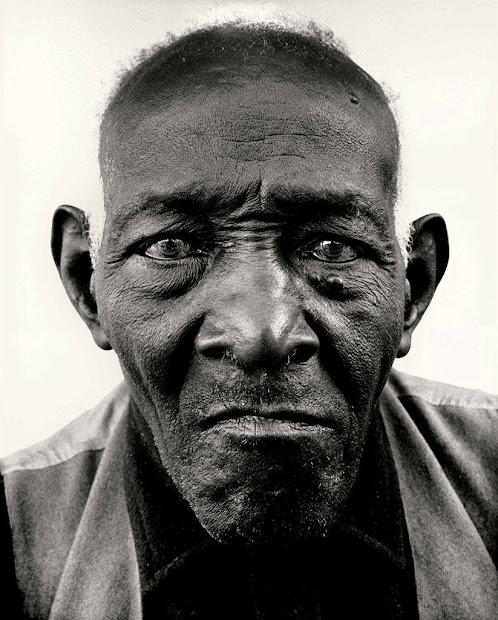Barthes, cited in Wexler, 2012

On 24th of March 1963, fashion photographer Richard Avedon (1923-2004) took one of his most powerful photographs in Algiers, Louisiana - a photograph of William Casby, a former slave, a photograph that has often been analysed, e.g. by Barthes (see first paragraph of this posting). Barthes's analysis of the photograph is often quoted but also criticised for taking place within a "Eurocentric analytical framework" (Burnett, 1995). Wexler joins this criticism and states that for Barthes, Casby still seems to be a slave, or rather, slavery seems to be Casby's "absolutely pure" meaning. Casby's eyes, however, reveal a tiny reflection of both Avedon and his cameras making "the photographic apparatus into part of Casby's own body. Casby aims his doubled lenses directly at the spectator, shooting back the objectifiying gaze." By doing so, Avedon reconceptualises the power relations (Wexler, 2012). Nevertheless, a certain limitation to power relations can be assumed when asking the hypothetical question whether William Casby could have requested a new photograph from Richard Avedon (Burnett, 1995).
Not much is known about William Casby - only that he was born into slavery in Algiers, Louisiana, and that his photograph was sold for € 56.200,-/$ 76.981,- at Christie's (via).
- - - - - - - - - - -
- Burnett, R. (1995) Cultures of Vision. Images, media & the Imaginary. Indiana University Press
- Wexler, L. (2012) "A More Perfect Likeness" Frederick Douglass and the Image of the Nation. In: Wallace, M. O. & Smith, S. M. (eds.) Pictures and Progress. Early Photography and the Making of African American Identity, 41-82. Duke University Press
- photograph via






















Wow, interesting read! Thanks!
ReplyDeleteGood to hear you find it interesting. Many thanks for your highly appreciated feedback, Derek!
DeleteGreat!
ReplyDeleteMany, many, many superthanks, Karen!
DeleteI think that's my great grandfather.
DeleteI first saw this photo at the MOMA right after Avedon has passed. I will forever remember reading those five simple words on the placard - William Casby Born A Slave. I remember how my throat tightened and it was as if all the sadness and horror of my ancestry came through me. I stood by the photo for an hour and watched the reactions. Most of the other Black folks had the same reaction as me, the Jewish people also had the same reaction. But the very wealthy white folks, many of whom are still living off their great grandaddy's slave created wealth, all read the placard and scurried nervously away. It was interesting to watch.
ReplyDelete